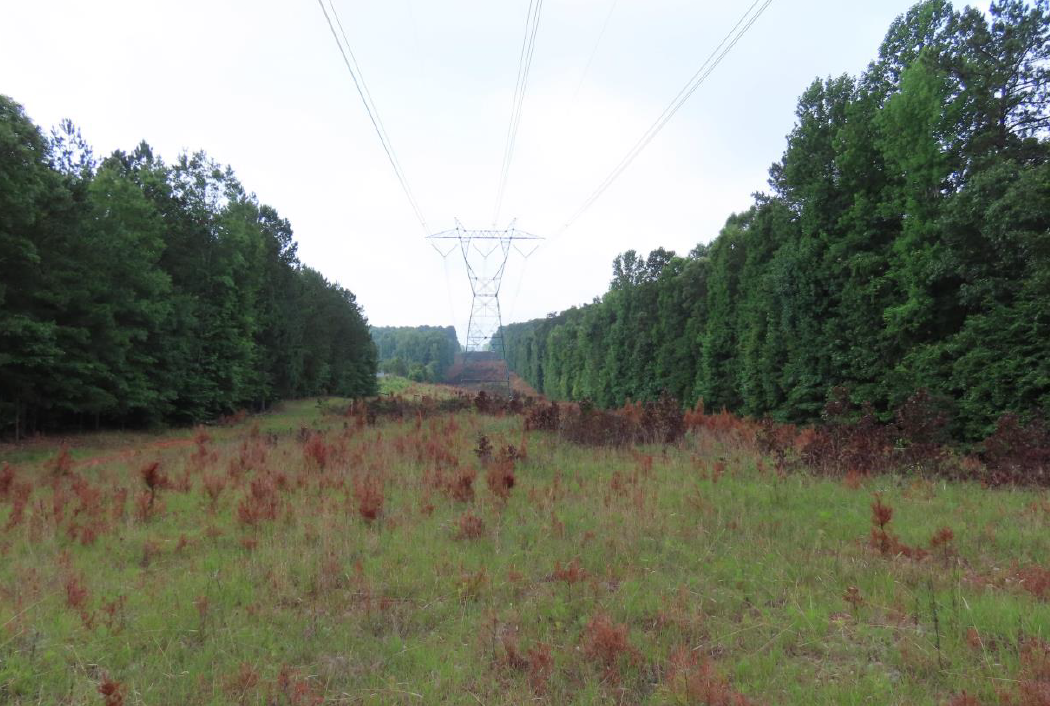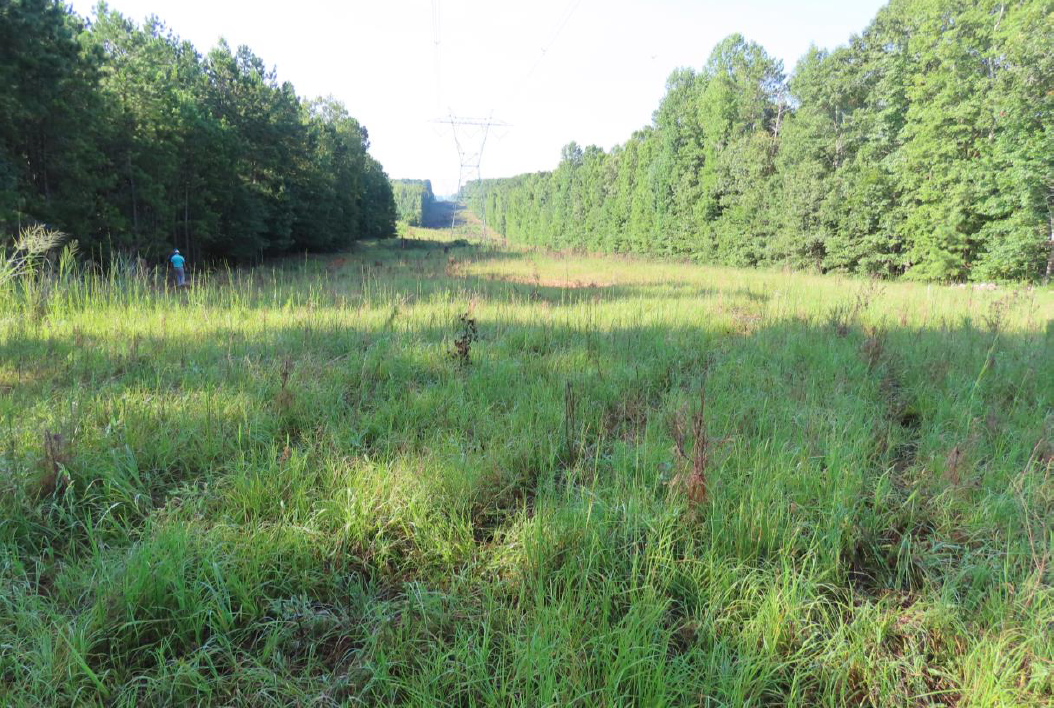What should the primary goal(s) be for an effective brush control program?
Darrell Russell (DR): The primary goal of any utility brush program is keeping the power on. Eliminating potential outages caused by brush contacting power delivery lines and equipment is the primary goal of vegetation managers. Compliance, safety and providing access for maintenance and restoration services are all important goals of successful vegetation management programs.
What strategies are most commonly used to achieve those goals and results?
Billy Moye (BM): As a herbicide applicator, I mainly use herbicides. With herbicides, some areas may need to use foliar applications, while others may need dormant-stem or basal applications. One size does not fit all. Utility companies often consider the quality of their herbicide programs as well as any tree-trimming, mowing or hand-cutting programs. It all comes down to your goals and how you can use available resources to achieve them effectively.
DR: Incorporating integrated vegetation management (IVM) practices is the best way to accomplish these goals. IVM is a system of land management processes for establishing compatible plant communities. As control methods continue to evolve from mechanical dominance to chemical broadcast and selective applications using low-volume backpacks, the latest step is selective herbicide usage combined with application selectivity. It is commonly referred to as a “grass friendly” application.
How do nonselective and selective control methods compare in terms of cost?
BM: Dollar for dollar, herbicides are by far less costly. Being able to tell a utility that you can spray herbicides once every three years for the same cost of annual mowing treatments really gets their attention. The biggest cost difference with herbicide applications isn’t product; it’s labor, especially as stem densities are lowered over time.
When comparing selective and nonselective control methods, which strategy is more environmentally friendly?
DR: Unlike nonselective herbicide applications, you can create barriers against woody brush when using selective or grass-friendly brush mixes. By leaving or developing areas for grasses and small forbs to flourish, you create habitat for small mammals, who in turn consume the woody brush seeds for biological control. In addition to control provided by the grass-friendly herbicides, grasses and small forbs provide protection from woody brush seed germination. Long-term research studies like State Game Lands 33 show that these benefits can work together to lower viable woody brush seed germination by as much as 88%, which results in stem-count reduction over time.
How can vegetation managers justify investment costs to key decision-makers?
BM: Herbicide programs are an investment. You often start seeing a real return on that investment by the third or fourth cycle. Think of it like your retirement: If you keep investing over time, one day you’re going to look up and realize that you’ve created something pretty amazing.
DR: Long-term stem count reductions allow less manpower and time to be spent on rights-of-way, which helps lower the cost of application per unit. This potential cost savings can be used to increase the number of acres treated in a cycle and can allow utilities to abbreviate treatment cycles by an entire year. Depending on the cycle/condition of a utility’s right of way, the payback period for increased initial cost can occur in as few as one or two cycles.
How do applicators know which products to choose?
BM: Do your own tests and don’t always take someone’s word for it. See what works to control a specific plant and look at your sites to know your goals and exactly what’s there before you write a prescription. The manufacturer is often an underutilized resource as well. When I use Corteva Agriscience™ products, I know that any time I call my rep with a problem, they will respond and assist in any way they can.
Do weeds ever grow resistant to herbicide applications? If so, what can practitioners do to improve efficacy?
BM: Use herbicides with different modes of action and different blends on different cycles. That’s one of the things that I recognized early on; manufacturers like Corteva seek to develop new herbicides that help us reduce herbicide resistance throughout utility rights-of-way.
DR: We have all heard of glyphosate-resistant plants, as well as others being on the rise. Herbicides used in tank mixes deploy different modes and/or sites of action to drastically reduce the potential for resistance. For example, TerraVue® herbicide features a different site of action than Milestone® and Method herbicides, which allows it to offer increased protection from resistance issues.
What products or mixes are currently recommended for enhancing selective brush control throughout utility ROW corridors?
BM: Grass-friendly and pollinator-friendly blends. Most of my utility customers have gone to a grass-friendly blend of some sort to promote the development of grasses throughout their rights-of-way. If you’ve got more grasses, you’ve got more rodents and fewer seeds falling to the soil. It really benefits their programs, surrounding wildlife and native plant species.
DR: The foundational mix for grass-friendly selective brush mixes was previously Vastlan®/Milestone herbicides. However, the registration of TerraVue has added enhanced control of certain woody species, which has resulted in TerraVue/Vastlan being the preeminent mix for selective brush management.

30 days after treatment with TerraVue
® herbicide

90 days after treatment with TerraVue
® herbicide
Choosing the right utility vegetation management strategy doesn’t have to be a difficult decision. Learn more about IVM strategies featuring selective herbicides and the environmental research supporting their use at HabitatWithHerbicides.com.
Expert Bios
Billy Moye
Billy Moye works as a manager with Progressive Solutions, which specializes in providing a wide range of herbicide application services to electric, gas and municipal utilities throughout the southeastern United States. Billy graduated from the University of Florida at the top of his class with a BS in Natural Resource Management and a minor in Forest Resource Management. He has been involved in vegetation management for utility and invasive species since 1997.
Darrell Russell
Darrell Russell is a vegetation management specialist with Corteva Agriscience. Darrell uses more than 30 years of experience with agricultural solutions to provide technical support, product recommendations and industry best practices to vegetation management customers throughout Georgia, North Carolina and South Carolina. He is based in Atlanta, Georgia.
™ ® Trademarks of Corteva Agriscience and its affiliated companies. Under normal field conditions, TerraVue® is nonvolatile. Milestone® and TerraVue have no grazing or haying restrictions for any class of livestock, including lactating dairy cows, horses (including lactating mares) and meat animals prior to slaughter. Label precautions apply to forage treated with Milestone or TerraVue and to manure and urine from animals that have consumed treated forage. Milestone, TerraVue and Vastlan® are not registered for sale or use in all states. Contact your state pesticide regulatory agency to determine if a product is registered for sale or use in your state. Consult the label for full details. Always read and follow label directions.
 30 days after treatment with TerraVue® herbicide
30 days after treatment with TerraVue® herbicide 90 days after treatment with TerraVue® herbicide
90 days after treatment with TerraVue® herbicide
